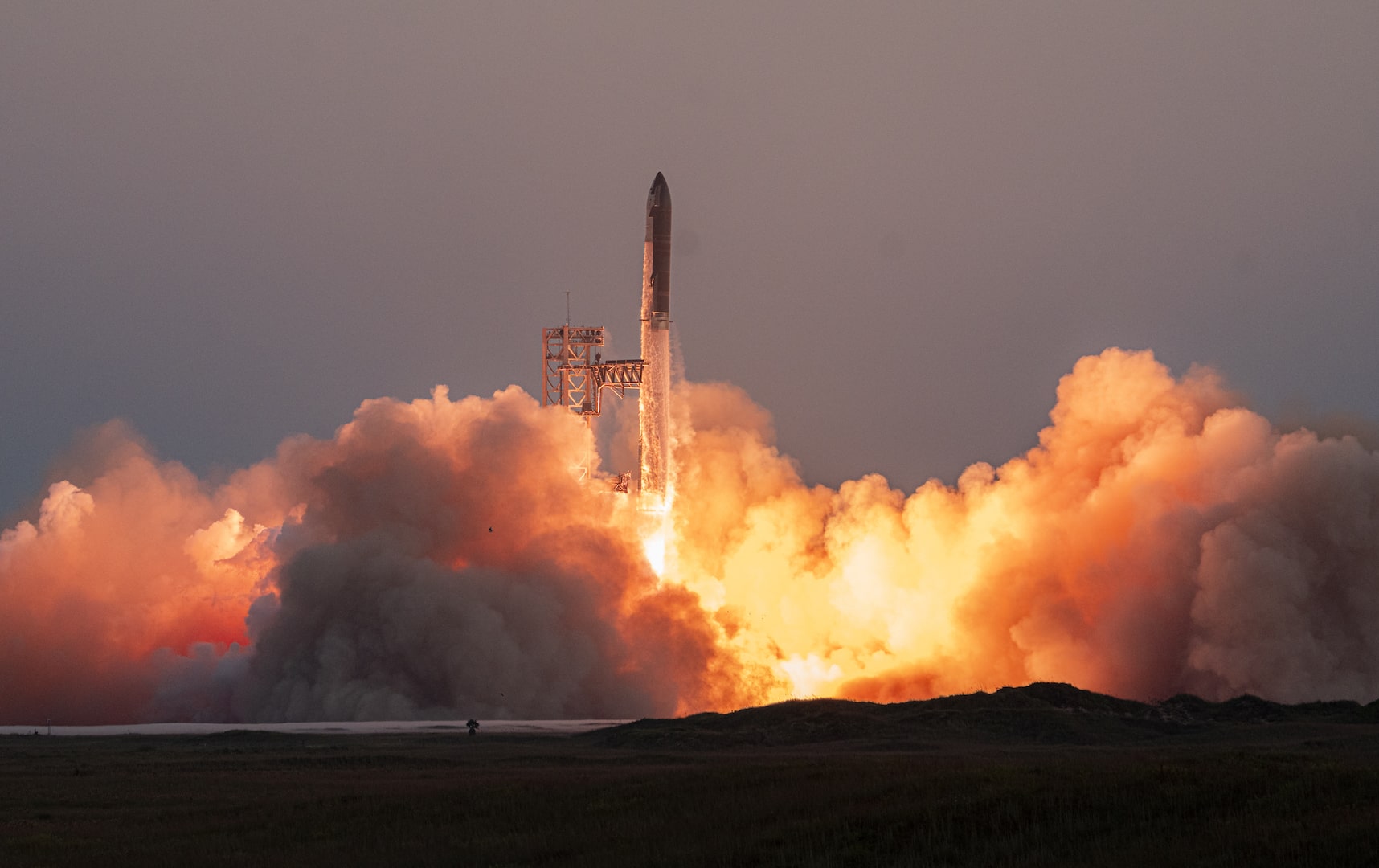Now that is called the innovation! SpaceX successfully caught the Super Heavy Booster [232-foot (71-meter)] mid-air in the fifth test flight of the Starship rocket and the first attempt to recover the Booster. This success is a revolutionary leap in interplanetary travel and sustainable space travel. SpaceX launched its 400-foot-tall (122 meters) Starship vehicle for the fifth time on October 13, launching the giant rocket up in the air from its Starbase site in South Texas.
The mission aimed to return the gigantic first-stage booster, known as Super Heavy Booster, directly to its launch mount, catching it using the two enormous mechanical arms, often referred to as “Chopsticks” of the launch tower named “Mechazilla” in Texas.
Seven minutes after the liftoff, the Super Heavy Booster executed what appeared to be a perfect landing or catch; hovering near the Mechazilla launch tower as the tower captured it with its robotic metal arms named “Chopsticks”. The space tech titan SpaceX executed the launch and landing process exactly as aimed.
Mechazilla has caught the Super Heavy booster! pic.twitter.com/6R5YatSVJX
— SpaceX (@SpaceX) October 13, 2024
SpaceX is working on its Starship project to ultimately help humanity settle on the Moon and Mars; and also reduce the Earth to Earth travel time. Elon Musk shared a demonstration video of SpaceX’s vision for Earth-to-Earth travel back in 2017; the video shows how Starship could dramatically change the way we travel across the world. The Starship can help humans reach anywhere on planet Earth within an hour. So with the “SpaceX Starship Super Heavy Catch” we are witnessing a historic milestone for the future innovation of space and time.
The successful recovery of its Starship rocket “Super Heavy Booster” marks a significant step forward in SpaceX’s vision for fully reusable rockets which is an essential element for making space travel more cost-effective, sustainable, and eventually accessible for broader missions, including those to the Moon, Mars, and beyond. Starship, designed by SpaceX, is an advanced next-generation rocket intended to carry large payloads and passengers into deep space. It is a fully reusable spacecraft, unlike most traditional rockets that are discarded after each launch.

What is Next for the SpaceX Starship:
The Super Heavy Booster recovery is a massive achievement, and SpaceX is not stopping here. The company continues to refine its Starship program, including optimizing its re-entry and landing processes to having a fully operational Starship ready for missions that could include launching satellites, conducting research, and, eventually, transporting humans to other planets, particularly MARS.
SpaceX is planning to launch five uncrewed Starship cargo missions to Mars to test the reliability of their landing capabilities. This mission is planned and expected to happen in 2026 when the next Earth-Mars transfer window opens. If uncrewed missions are successful then crewed starship missions will take place after 2-4 years; that means one-way missions to send humans to Mars depends completely on the success of Starship and its uncrewed missions.
It sounds insane to even think about landing such gigantic Starship Spacecraft on planets like Mars which has a very thin atmosphere, it is about 100 times less dense than Earth’s atmosphere; which means there’s 99% less air on Mars than on Earth. So far NASA has successfully landed SUV-sized rovers which have expanded our understanding of Mars but it will not be the same with the Starships considering their gigantic size.
Before Mars’s uncrewed mission, there is also an important mission in collaboration with NASA for a trip to the Moon. NASA has finalised SpaceX’s Starship as the vehicle to be the first crewed lander for its Artemis moon exploration program. If all goes as planned then Starship will land NASA astronauts on Earth’s nearest celestial body and only moon for the first time under the Artemis 3 mission, which is expected to launch in September 2026.
Watch the complete launch event of Starship’s fifth flight test:
Watch Starship’s fifth flight test https://t.co/LVrCnTv797
— SpaceX (@SpaceX) October 12, 2024












